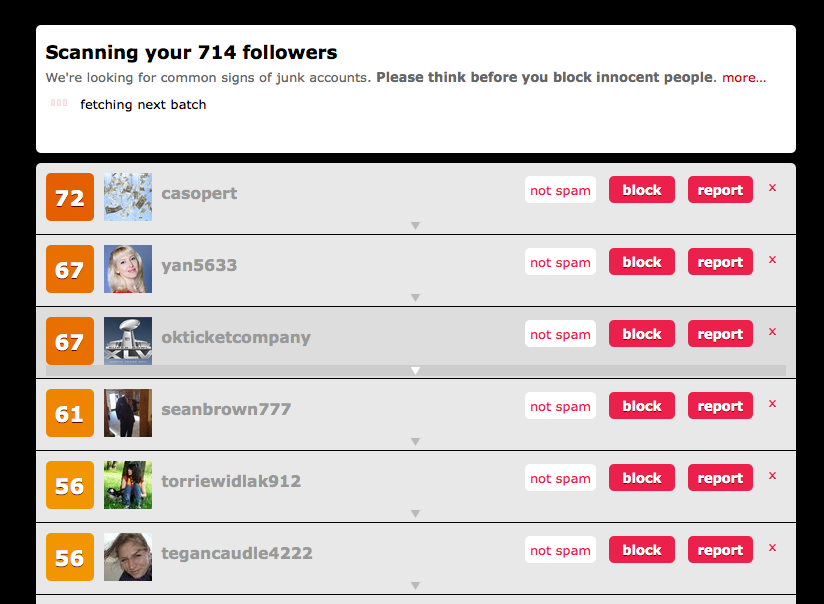 I was physically present (IRL, In Real Life) recently at an event where the Twitter hashtag stream was completely co-opted by twitter spambots. I’ve live-tweeted from a half-dozen tech and cultural events since the beginning of this year, when I first immersed myself in Twitter. I’m very curious about how social media interactions work – and when and why they can go very off-track. When I live-tweet, I try to observe the hashtag stream in real time, usually using Tweetchat.com or setting up a Hootsuite stream. I’ve followed a handful of events remotely via the Twitter hashtag as well, including a recent conference in Boston called Rethink Music (#rethinkmusic). In addition, I participate regularly in a weekly Twitter chat called #ggchat, one of thousands happening all the time in the Twittersphere. Following Twitter hashtag streams has become an integral part of my participation, and that of many others, in this virtual global sociological communications experiment called Twitter.
I was physically present (IRL, In Real Life) recently at an event where the Twitter hashtag stream was completely co-opted by twitter spambots. I’ve live-tweeted from a half-dozen tech and cultural events since the beginning of this year, when I first immersed myself in Twitter. I’m very curious about how social media interactions work – and when and why they can go very off-track. When I live-tweet, I try to observe the hashtag stream in real time, usually using Tweetchat.com or setting up a Hootsuite stream. I’ve followed a handful of events remotely via the Twitter hashtag as well, including a recent conference in Boston called Rethink Music (#rethinkmusic). In addition, I participate regularly in a weekly Twitter chat called #ggchat, one of thousands happening all the time in the Twittersphere. Following Twitter hashtag streams has become an integral part of my participation, and that of many others, in this virtual global sociological communications experiment called Twitter.
Maybe because I’m relatively new to Twitter, I’ve never seen a Twitter stream completely taken over by spambots. I found it fascinating and dismaying at the same time. This article in The Atlantic Wire by Rebecca Greenfield gives a good overview of some of the different ways in which Twitter hashtag streams can get co-opted or become annoying. The stream I was on recently was taken over by the Types 1 and 2 spammers which Rebecca mentions: Porn Bots and Jokesters. I didn’t click on any of the links; I could tell the Porn Bots by their Twitter avatars of scantily clad women and the fact they had few tweets, no followers and were following no one. The other category of spammers I saw which Rebecca doesn’t mention I’ll call Job Bots – these are the same as Porn Bots, except the links they promote are to scammy Craig’s List ads, you know: “Easy job! Earn $500 a week using your computer…”
